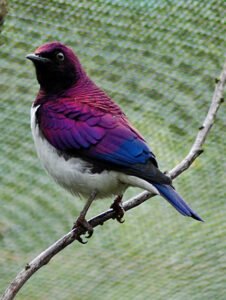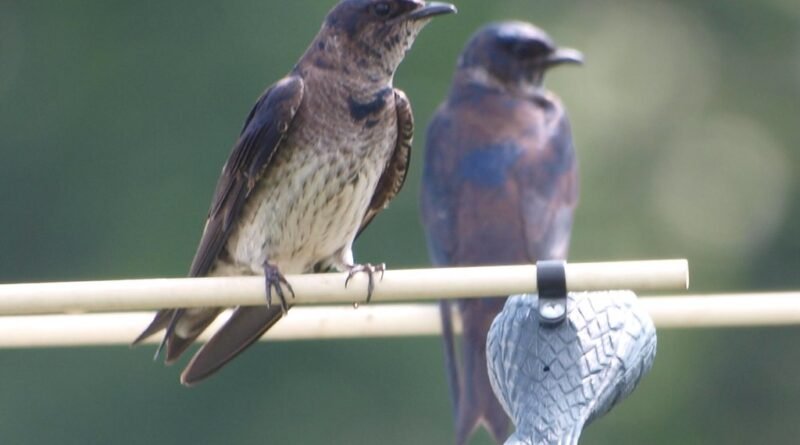Exploring Purple Birds
Birds with purple plumage exhibit some of the most captivating and colorful appearances in the avian world. From iridescent feathers to subtle hues of violet and lavender, purple birds are admired for their beauty and unique adaptations. In this article, we delve into the enchanting world of purple birds, exploring their diversity, habitats, behaviors, and conservation significance.
I. Introduction to Purple Birds
A. Definition and Perception
Purple birds are characterized by feathers that display shades of purple, ranging from deep violet to soft lavender. The coloration is often produced by specialized pigment structures in the feathers, such as melanins and carotenoids, combined with structural coloration that refracts light to create iridescence.
B. Significance of Plumage Coloration
The vibrant purple plumage of birds serves multiple purposes, including species recognition, mate attraction, and camouflage. Purple hues can be especially striking under sunlight, making these birds stand out in their natural habitats.
II. Notable Species of Purple Birds

A. Purple Gallinule (Porphyrio martinicus)
The purple gallinule, found in wetlands of the Americas, exhibits stunning purple and blue plumage with a bright red bill. This bird is known for its distinctive appearance and loud vocalizations.
B. Purple Finch (Haemorhous purpureus)
The purple finch, native to North America, showcases a reddish-purple hue on its head and breast during the breeding season. It is often observed at bird feeders and in mixed-species flocks.
C. Violet-backed Starling (Cinnyricinclus leucogaster)
Found in sub-Saharan Africa, the violet-backed starling displays iridescent purple and green plumage, with striking white underparts. This bird is known for its glossy appearance and melodious calls.
D. Purple Sunbird (Cinnyris asiaticus)
The purple sunbird, native to South Asia, exhibits vibrant purple plumage in males, especially during the breeding season. It is a small, nectar-feeding bird with a long, curved bill adapted for sipping floral nectar.
E. Purple Honeycreeper (Cyanerpes caeruleus)
Native to Central and South America, the purple honeycreeper is renowned for its brilliant purple and turquoise plumage. This bird primarily feeds on fruits and insects in tropical forests.
III. Habitat and Distribution
A. Tropical and Subtropical Regions
Many purple birds are found in tropical and subtropical regions, where dense forests, wetlands, and grasslands provide ideal habitats for foraging, nesting, and breeding.
B. Wetland Environments
Some species, like the purple gallinule, thrive in wetland ecosystems characterized by marshes, swamps, and freshwater ponds. These birds are adapted to aquatic foraging and may use floating vegetation for nesting.
C. Urban and Human-Altered Landscapes
Certain purple bird species, such as the violet-backed starling, have adapted to urban environments and may be found in parks, gardens, and cultivated areas where food resources are abundant.
IV. Behaviors and Adaptations
A. Feeding Ecology
Purple birds exhibit diverse feeding strategies, including insect-eating, nectar-sipping, and fruit-gleaning. Their specialized bills and tongues are adapted for accessing different food sources in their respective habitats.
B. Breeding and Reproduction
During the breeding season, male purple birds often display their vibrant plumage to attract mates. Nesting behaviors vary among species, with some birds constructing elaborate nests while others utilize natural cavities or abandoned structures.
C. Vocalizations and Communication
Purple birds use vocalizations, songs, and displays to communicate with mates, defend territories, and coordinate group behaviors. Each species has its own repertoire of calls that play important roles in social interactions.
V. Conservation Status and Threats

A. Habitat Loss and Fragmentation
Many purple bird species are threatened by habitat loss due to deforestation, wetland drainage, and urbanization. Loss of critical habitats reduces breeding success and disrupts migratory patterns.
B. Climate Change
Climate change poses additional challenges to purple birds, affecting food availability, nesting success, and migratory behaviors. Shifts in temperature and precipitation patterns may alter the distribution of these species.
C. Conservation Efforts
Conservation initiatives aimed at protecting purple birds include habitat restoration, establishment of protected areas, and community-based conservation projects. Education and public awareness campaigns raise awareness about the importance of preserving biodiversity.
VI. Human Interaction and Cultural Significance
A. Birdwatching and Ecotourism
Purple birds attract birdwatchers and nature enthusiasts from around the world, contributing to ecotourism and local economies. Birding tours promote conservation and support efforts to conserve avian habitats.
B. Symbolism and Mythology
In various cultures, purple birds symbolize beauty, grace, and spirituality. They appear in folklore, art, and literature as symbols of freedom and inspiration, reflecting humanity’s deep connection with the natural world.
VII. Conclusion: Celebrating Purple Birds
Purple birds captivate our imagination with their stunning plumage, diverse behaviors, and ecological importance. By understanding and conserving these avian treasures, we contribute to the preservation of Earth’s biodiversity and ensure a sustainable future for generations to come.

